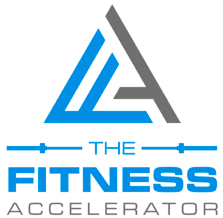Want to know a sure fire way to eliminate progress from being achieved, ensure joints feel achy and muscles don’t feel fatigued, and you look the same forever?
Neglect control during exercise.
You see, our bodies recognize one thing in terms of building strength and muscle in the gym.
Tension.
Without tension on our muscles, our body says “that’s all you got?” And promptly stays the same.
Without tension on our muscles, our body has absolutely no reason to grow and chance into what we envision.
Without tension on our muscles, our joints take the heat and we feel more beat up than Conor McGregor on the last PPV fight.
That’s exactly the scenario we create when we rush through reps, sets and workouts in general.
When tempo and speed isn’t considered or cared for it’s easy to have compensations kick in, have muscles tune out and have joints take over.
I’ve seen it so many times with clients in the past where they come to me after trying everything. They’ve had coaches and trainers in the past, they’ve put in some time and effort, but look nothing like they want to.
Same old shrimp or blimp that they’ve seen in the mirror for years.
They have decent exercise knowledge and can demonstrate a movement when I ask them to.
Often times, however, the missing link isn’t their movement patterns, or program design. It’s the specifics of how they are moving.
They aren’t controlling the weight, the weight is controlling them. Recipe for disaster like you read about.
Breaking things down into a little bit of science for you…
In specific movements there are (at least should be) muscle contractions.
Within these muscle contractions you have a few distinct phases, three to be exact.
We have the concentric contraction, isometric contraction and eccentric contraction.
These are the shortening, static and lengthening phase, respectively.
If we aren’t mentally and physically present for all three we will have problems down the road.
Everyone knows the importance of the concentric. Think bicep curl. You curl up the dumbbell, squeeze the bicep, then the weight comes down.
But are you actually squeezing at the top? Are you prioritizing the isometric or static contraction?
Are you lowering down under control? Or are you letting the dumbbell pull you back down to the start position. If you are, you’re neglecting the eccentric, or lengthening phase.
All three phases are important and there should be exactly ZERO lapse in tension throughout the entire contraction, and entire set in itself.
The three phases are obviously different in that they do different things, but they also have different strengths when compared to each other.
The weakest is the concentric.
Think about it… what’s the first thing that happens when you get fatigued in a curl? You can’t raise the dumbbell for another rep. Shortening is now gone.
The middle ground or next strongest is the isometric.
Say you get the last rep up in the curl, what happens next when you’re fatigued?
You can hold it for another second or two before it starts to come back down.
Strongest phase of a contraction is the eccentric, or lowering phase.
You curl the final rep, barely get it up, hold it for a second then control that bitch down.
The thing is, you actually need to focus and CONTROL the weight rather than letting it pull you back down.
If you are you prioritize, focus and control all phases of the movement you’ll stimulate the muscle A LOT more, leading you to achieve expedited results in muscle growth and substantially less joint pain and discomfort.
Since the concentric is the strongest, it’s a good idea to milk that phase. This is especially true if growing muscle and torching fat is your goal.
So on the curl… we want to explode up with the concentric, hold for a moment, and milk the lowering like we said.
As an example, curl up for a 1 count, hold for a 1 count, lower for a 3 count, hold at the bottom for a 0 count. Repeat for the whole set and don’t let that tempo change, regardless of how much it burns or sucks.
As mentioned above, TENSION is a massive driver for growth and without it we’re up the river without a paddle.
Milk that tension and you’ll need to do substantially less work and reap a higher grade of result.

